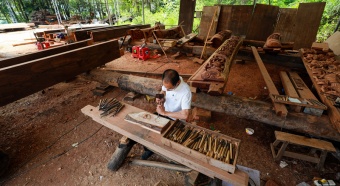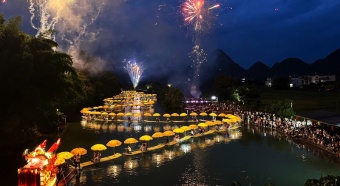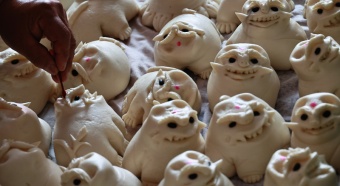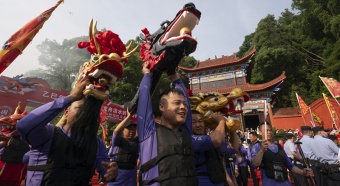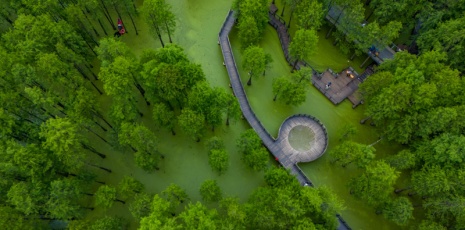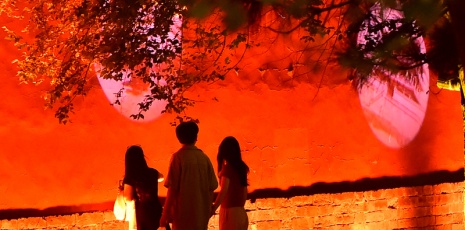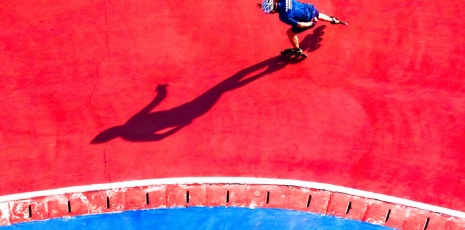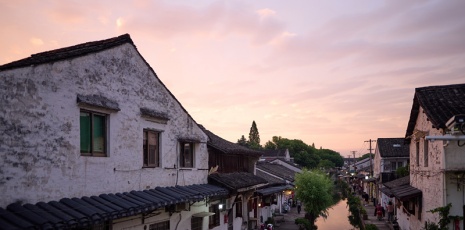
Michael Lindsay tunes a radio receiver at the Jinchaji base in Hebei province sometime between 1941 and 1944. Provided to China Daily
This is the second in a series of special reports about the experiences of foreigners who either lived or served in China between 1937 and 1945. Here, a photo exhibition is shedding light on an economist, radio expert who aided guerrilla forces, Cui Shoufeng reports.
Michael Lindsay arrived in China in 1938 intending merely to teach Keynesian economics. Instead, he was inspired to play a crucial role in the country's resistance against the invading Japanese forces.
The Englishman, now the subject of a photographic exhibition that has visited several Chinese universities, helped to smuggle vital supplies to guerrilla fighters during World War II and spent years behind enemy lines, where he even started a family.
War had already broken out by the time Lindsay, an Oxford College graduate and former student of groundbreaking economist John Maynard Keynes, arrived in Beijing to take up a lecturing post at Yenching University, later renamed Peking University.
The Japanese imperial army's invasion of northern China began in July 1937, and three months later the first village massacre was reported in nearby Hebei province, then known as Hopei.
In the occupied Beijing, Lindsay had become "distressed by his students' stories of the way they were treated by the Japanese police at the city gate", his granddaughter, Washington-based scholar Susan Lawrence, said in December when the exhibition opened at Shanghai Library before moving to Beijing's Peking University and now Renmin University of China, which hosts the show until April 17.
Her grandfather also witnessed firsthand appalling actions by the occupying forces, she said.

